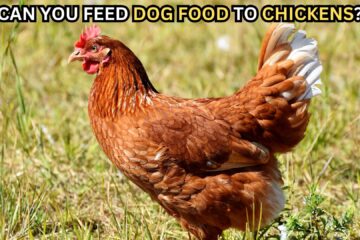Ollie Dog Food is a premium pet nutrition brand that focuses on delivering high-quality, human-grade food tailored to the unique needs of dogs.
By using only the finest ingredients, Ollie ensures that each meal is rich in proteins, essential vitamins, and minerals, supporting everything from a dog’s coat and skin health to digestive wellness and energy levels.
The customization of diet plans based on a dog’s specific age, breed, and health requirements sets Ollie apart, promising a more personalized approach to pet nutrition.
Importance of a Gradual Transition to New Dog Food
Switching your dog’s food abruptly can lead to discomfort and health issues, such as diarrhea, vomiting, and appetite loss.
A gradual transition is crucial to allow your dog’s digestive system to adjust to the new food.
This careful approach minimizes the risk of gastrointestinal upset and ensures that your dog can benefit from the new diet without adverse effects.
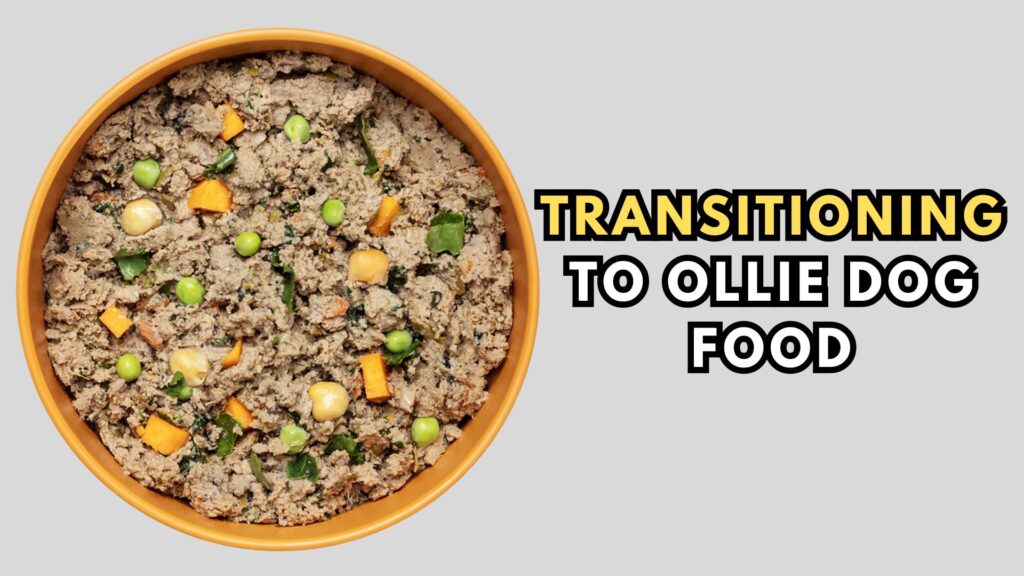
This guide aims to provide pet owners with a structured and safe method to transition their dogs to Ollie Dog Food.
By following this guide, you can ensure a smooth and healthy switch, enhancing your dog’s well-being and ensuring they receive the full nutritional benefits of their new diet.
Understanding the Need for a Gradual Transition
Why Sudden Changes in Diet Can Be Harmful to Dogs
Dogs have sensitive digestive systems. A sudden switch in diet can overwhelm their system, leading to various digestive issues.
This is because their stomachs need time to produce the right enzymes to digest new foods properly.
An abrupt change can disrupt the balance of the gut flora, leading to discomfort and potential health issues.
The Role of a Gradual Transition in Preventing Digestive Issues
A gradual transition to Ollie Dog Food helps prevent these issues by slowly introducing the new food in increasing amounts over several days or weeks.
This method gives the digestive system the necessary time to adjust to the new diet without causing undue stress.
It also allows pet owners to monitor their dog’s response to the new food, ensuring it is well-tolerated and beneficial.
Preparing for the Transition
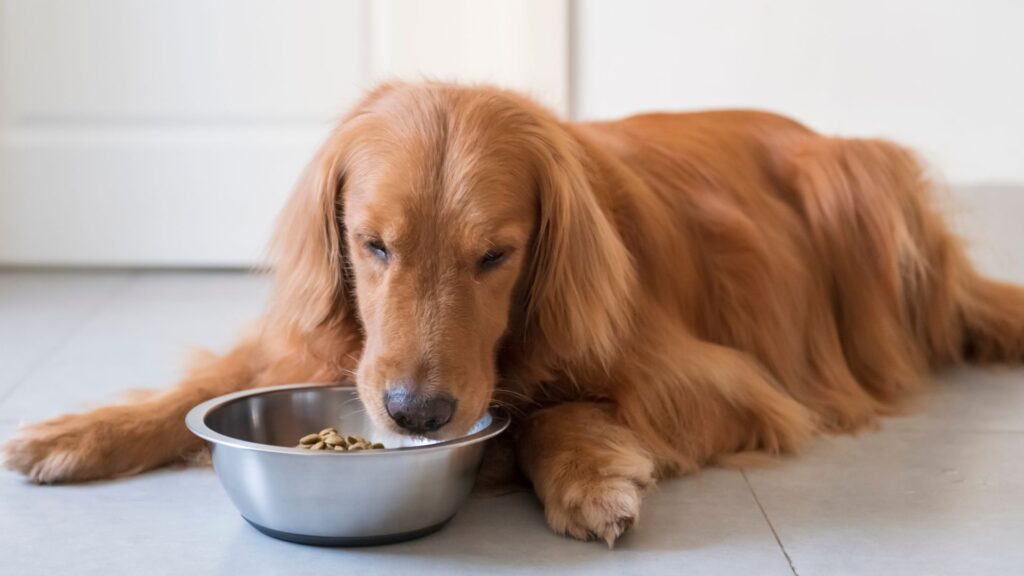
Evaluating Your Dog’s Current Diet and Health Status
Before beginning the transition, it’s important to assess your dog’s current diet and overall health.
Consider any allergies, sensitivities, and specific nutritional needs they may have. Understanding these factors will help you choose the most suitable Ollie formula for your dog.
Selecting the Right Ollie Dog Food Formula for Your Dog
Ollie offers a variety of recipes to cater to different dietary requirements and preferences. Whether your dog thrives on chicken, beef, turkey, or lamb, there’s an Ollie formula to match.
Consider your dog’s protein preferences, any food sensitivities, and their nutritional needs based on their activity level, weight, and any health conditions.
Consulting with a veterinarian can also provide valuable insights into the best choice for your dog’s new diet.
Step-by-Step Guide to Transitioning
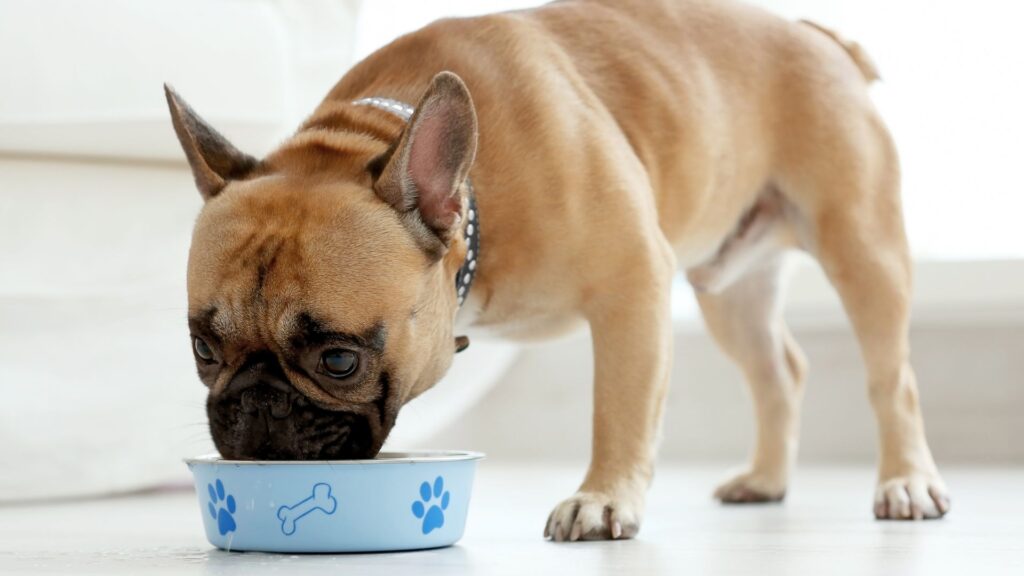
Week 1: Initial Introduction
How to Introduce Ollie Dog Food into Your Dog’s Diet
- Start Small: Begin by mixing approximately 25% of Ollie Dog Food with 75% of your dog’s current food. This blend allows your dog to gradually get accustomed to the taste and texture of the new food.
- Consistency is Key: Serve this mix for the entire first week. It ensures consistency, helping your dog’s digestive system to slowly adapt without causing upset.
Monitoring Your Dog’s Reaction to the New Food
- Observe Digestive Health: Pay close attention to your dog’s stool. Loose stools or constipation can indicate that the transition pace needs to be adjusted.
- Watch for Allergies: Also, keep an eye out for signs of allergies, such as itching or skin rashes, which could indicate a sensitivity to an ingredient in the new diet.
- Appetite Changes: Notice if there’s a change in your dog’s appetite. A gradual increase in interest in the new food mix is a good sign.
Week 2-3: Increasing the Proportion
Adjusting the Ratio of Old Food to Ollie Dog Food
- Increase Gradually: Shift the mix to about 50% Ollie Dog Food and 50% of the current food during the second week, and then to 75% Ollie Dog Food and 25% current food in the third week.
- Adjust Based on Reaction: If your dog shows any signs of digestive discomfort, slow down the transition pace. It’s okay to take a bit longer if your dog needs it.
Signs to Watch for Indicating a Successful Transition
- Healthy Stool: Consistent, firm stools are a primary indicator of a successful dietary transition.
- Energetic Behavior: An increase in energy and enthusiasm for meals can also signify that your dog is adjusting well to their new diet.
- No Adverse Reactions: Absence of any allergic reactions or digestive issues as you increase the proportion of Ollie Dog Food.
Week 4: The Complete Switch
When to Make Ollie Dog Food the Sole Diet
- Confirm Digestive Comfort: By the end of week 3, if there are no signs of digestive distress and your dog seems to enjoy the new food, you can switch entirely to Ollie Dog Food.
- Final Transition: Serve only Ollie Dog Food, observing your dog closely for the next several days to ensure they are fully adapted.
Tips for Maintaining Dietary Variety and Interest
- Rotate Recipes: Consider varying the Ollie recipes you feed your dog to maintain their interest in meals and ensure a balanced intake of different nutrients.
- Add Supplements if Necessary: Consult with your vet about adding any supplements to your dog’s diet, especially if they have specific health needs.
- Engage with Meals: Make meal times engaging. Use feeding toys or puzzles to turn mealtime into a stimulating activity for your dog.
Always consult with a veterinarian if you notice any persistent issues or if you have concerns about your dog’s health at any point during the transition.
This step-by-step guide, approached with patience and attention, can help ensure a smooth and successful switch to Ollie Dog Food, contributing to your dog’s long-term health and happiness.
Monitoring Your Dog’s Health Throughout the Transition
Monitoring your dog’s health during a dietary transition is crucial for ensuring the switch is beneficial and not causing undue stress or health issues.
As a veterinarian, I recommend paying attention to several key health indicators and knowing when it might be necessary to consult a professional.
Furthermore, addressing common questions can help pet owners feel more confident and informed throughout the process.
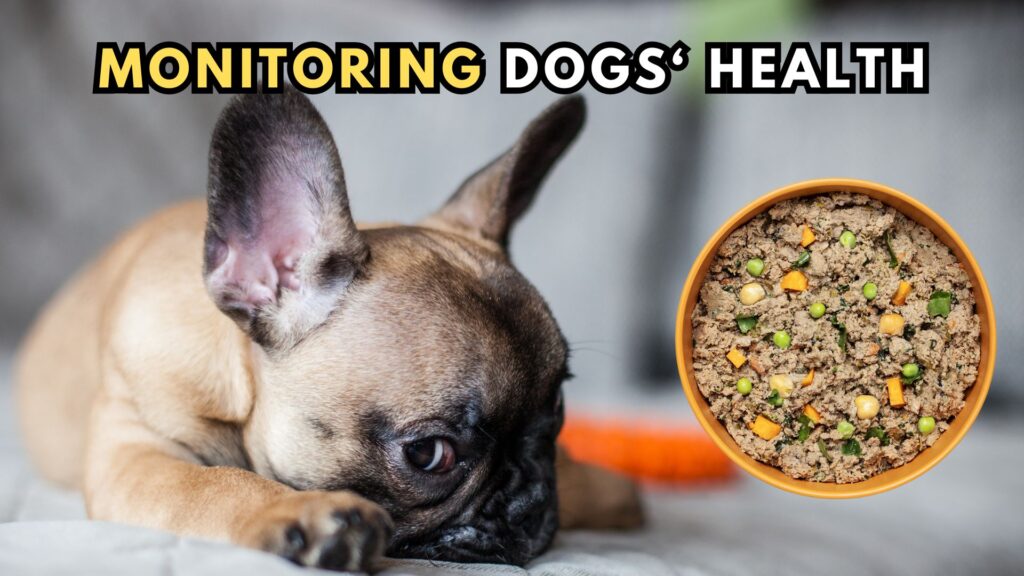
Key Health Indicators to Monitor
- Digestive Health: Observe your dog’s stool consistency, frequency, and effort. Signs of a healthy transition include firm, regular stools without straining.
- Appetite and Weight: Monitor your dog’s appetite and weight closely. A healthy transition should not cause significant weight loss or gain. Ensure your dog is eating enough but not overeating.
- Energy Levels and Behavior: Note any changes in energy levels or behavior. Your dog should maintain their usual level of energy and enthusiasm for daily activities.
- Skin and Coat Health: A good diet will positively affect your dog’s skin and coat. Look for a shiny coat and healthy, clear skin without new irritations or hot spots.
When to Consult a Vet During the Transition Process
- Persistent Digestive Issues: If digestive upset (like diarrhea or vomiting) persists beyond a few days, consult your veterinarian.
- Allergic Reactions: Signs of allergies, such as excessive itching, red skin, or ear infections, warrant a vet visit.
- Significant Appetite Changes: If your dog refuses to eat for more than a day or shows a drastic reduction in appetite, it’s important to seek veterinary advice.
- Unexplained Weight Loss or Gain: Any significant changes in weight during the transition could indicate that the diet may not be meeting your dog’s nutritional needs.
FAQs on Transitioning to Ollie Dog Food
How Long Should the Total Transition Take?
The total transition to Ollie Dog Food should ideally take about 3-4 weeks. This timeframe allows your dog’s digestive system to adjust without causing distress.
Some dogs may require a slightly longer period, especially if they have sensitive stomachs or are particularly finicky eaters.
What If My Dog Refuses to Eat Ollie Dog Food?
If your dog is hesitant to eat Ollie Dog Food, try mixing it with a small amount of their favorite wet food or a safe-for-dogs broth to increase palatability.
Ensure the new food is at room temperature as cold food can be less appealing. If refusal persists, consult with your veterinarian for advice.
Can I Switch Back to the Old Food If My Dog Doesn’t Adapt?
If your dog doesn’t adapt to the new food despite a gradual transition, you may consider switching back to the old food. However, reintroduce the original food gradually to avoid digestive upset.
It’s also beneficial to discuss the situation with your vet to determine if there’s an underlying issue or if another brand or food type might be more suitable.
How to Store and Handle Ollie Dog Food Correctly?
- Refrigeration: Once opened, Ollie Dog Food should be stored in the refrigerator to maintain freshness. Follow the use-by dates and storage instructions on the packaging.
- Serving: Serve the food at room temperature to enhance its aroma and flavor. If you’ve stored it in the refrigerator, you might need to warm it slightly in the microwave or by adding a bit of warm water.
- Portioning: Use the provided guidelines to portion the food correctly based on your dog’s weight, age, and activity level.
Transitioning your dog to a new diet, like Ollie Dog Food, requires careful monitoring and patience. By paying attention to your dog’s health and behavior, you can ensure a smooth transition.
Always consult with a veterinarian if you have concerns or if your dog exhibits adverse reactions during the dietary change.


